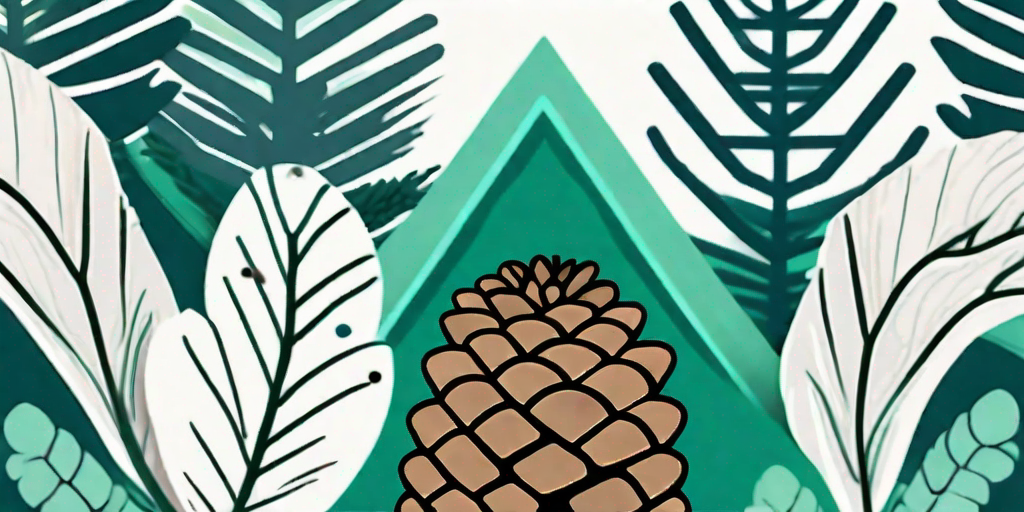
Ah, pine nuts. Those tiny, teardrop-shaped kernels that add a delightful crunch to your salads and a rich, buttery flavor to your pesto. But have you ever stopped to wonder where these little nuggets of deliciousness come from? Well, buckle up, my friend, because we're about to embark on a nutty journey into the fascinating origins of pine nuts.
The Pine Nut: A Brief Introduction
Before we dive into the origins of pine nuts, let's get to know them a little better. Pine nuts, also known as pignoli, are the edible seeds of pine trees. Yes, you read that right. Those towering giants you see in the forest? They're the proud parents of your favorite salad topping.
But not all pine trees produce these edible seeds. Out of the 115 species of pine trees, only about 20 produce seeds large enough to be worth harvesting. These include the stone pine, the sugar pine, and the Korean pine. So next time you're munching on a pine nut, give a little nod of thanks to these generous trees.
The Ancient Origins of Pine Nuts
Now, let's travel back in time to uncover the ancient origins of pine nuts. Pine nuts have been a part of the human diet for thousands of years. Archaeological evidence suggests that they were consumed by our ancestors as far back as the Paleolithic period. That's right, folks. Pine nuts are so delicious, even cavemen couldn't resist them.
Fast forward to the Roman Empire, and pine nuts were still a popular food item. They were often used in Roman cooking, particularly in sweet dishes. So, the next time you're enjoying a pine nut tart, remember that you're participating in a culinary tradition that dates back thousands of years.
The Spread of Pine Nuts
But how did pine nuts spread from the forests of Europe and Asia to the rest of the world? Well, we have the explorers and traders of yesteryears to thank for that. As they traveled the world, they brought with them the seeds of the pine trees, introducing them to new lands.
Today, pine nuts are cultivated in many parts of the world, including North America, Europe, Asia, and the Middle East. They are a staple in many cuisines, from Italian to Korean, and are loved for their unique flavor and texture.
The Harvesting of Pine Nuts
Now that we've covered the ancient origins of pine nuts, let's move on to their harvesting. Harvesting pine nuts is a labor-intensive process, which is why they're often more expensive than other nuts. The seeds are encased in a hard shell, which needs to be cracked open to reveal the edible kernel inside.
The harvesting process begins in late summer when the pine cones start to mature. The cones are harvested, and then they are left to dry in the sun. Once the cones have dried, they open up, releasing the seeds. The seeds are then collected and shelled to reveal the pine nuts we all know and love.
The Role of Animals in Pine Nut Harvesting
But humans aren't the only ones who love pine nuts. Many animals, including squirrels and birds, are big fans of these tasty seeds. In fact, they play a crucial role in the dispersal of pine seeds. When they eat the seeds, they often drop some of them, which then grow into new pine trees. So, in a way, we have these animals to thank for our pine nut harvests.
However, these animals can also pose a challenge to pine nut harvesters. They often get to the cones before the humans do, leaving a smaller harvest for us. But hey, we can't really blame them. After all, who can resist the allure of a tasty pine nut?
FAQs
Why are pine nuts so expensive?
Pine nuts are more expensive than other nuts due to the labor-intensive process of harvesting them. Each pine nut has to be manually extracted from its shell, which can be a time-consuming task. Additionally, pine trees only produce a large crop of nuts every 3 to 5 years, which can lead to shortages and higher prices.
Can I harvest my own pine nuts?
Yes, you can! If you have a pine tree that produces large seeds, you can certainly try your hand at harvesting your own pine nuts. Just remember to leave some for the squirrels!
Are pine nuts good for you?
Absolutely! Pine nuts are packed with nutrients, including vitamins A and E, iron, and protein. They're also a great source of monounsaturated fats, which are good for heart health. So go ahead, sprinkle them on your salad or whip up a batch of pesto. Your taste buds and your body will thank you.
Conclusion
And there you have it, folks. The fascinating origins of pine nuts, from their ancient beginnings to their modern-day harvesting. So the next time you're enjoying these delicious little kernels, take a moment to appreciate the long journey they've taken to get to your plate. And remember, every pine nut has a story. Happy munching!











